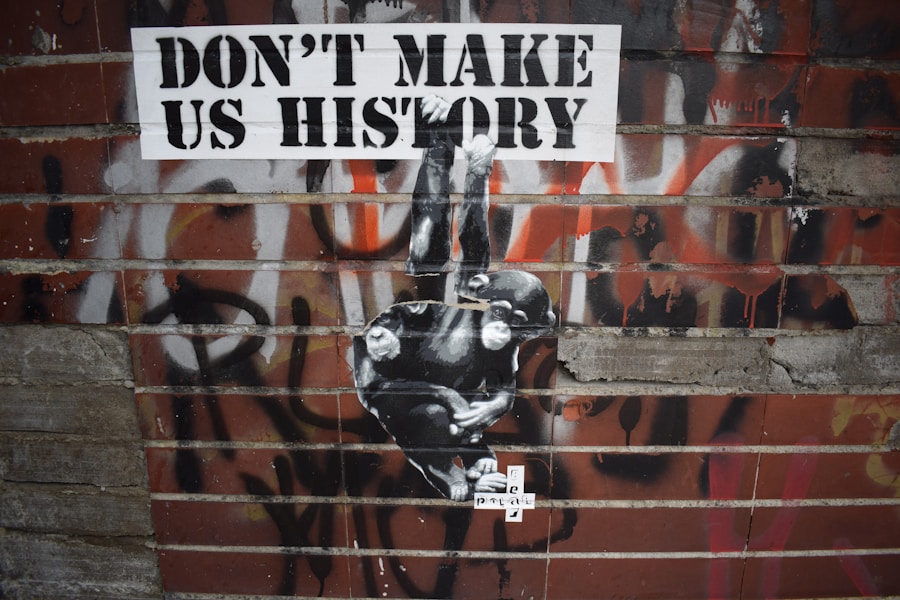Anthropology and archaeology are two interrelated fields that delve into the complexities of human existence, exploring the myriad ways in which societies have developed, interacted, and transformed over time. Anthropology, as a broad discipline, encompasses the study of human behavior, culture, and biological aspects across different societies. It seeks to understand the intricacies of human life by examining social structures, belief systems, and cultural practices.
Archaeology, on the other hand, is a subfield of anthropology that focuses specifically on the material remains of past societies. By analyzing artifacts, structures, and other physical evidence, archaeologists reconstruct historical narratives and gain insights into the lives of people who lived long before written records were kept.
While anthropology provides theoretical frameworks and methodologies for studying cultures, archaeology offers tangible evidence that can validate or challenge these theories. Together, they create a holistic view of human history, allowing researchers to piece together the puzzle of our collective heritage. This synergy is particularly important in an era where understanding cultural diversity and historical context is crucial for addressing contemporary global challenges.
Key Takeaways
- Anthropology and archaeology are disciplines that study human societies and cultures, as well as the material remains of past human activities.
- Human society has evolved over time, from small hunter-gatherer groups to complex civilizations, and understanding this evolution is crucial to understanding modern society.
- Archaeological discoveries have uncovered ancient civilizations and provided insights into their social, political, and economic structures.
- Technology plays a crucial role in anthropological and archaeological discoveries, from remote sensing to 3D modeling and virtual reality.
- Studying human migration and interaction helps us understand how different cultures have interacted and influenced each other throughout history.
The Evolution of Human Society
The Neolithic Revolution
The transition from nomadic hunter-gatherer groups to settled agricultural communities around 10,000 years ago represents one of the most profound shifts in human history. This Neolithic Revolution not only transformed subsistence strategies but also laid the groundwork for the rise of cities and complex societies.
Social Structures and Cultural Practices
As societies evolved, so did their social structures and cultural practices. The emergence of stratified societies introduced hierarchies based on wealth, power, and access to resources. This stratification often led to the development of governance systems, trade networks, and cultural exchanges that further enriched human experience.
Dynamism of Human Societies
For instance, the rise of city-states in ancient Mesopotamia facilitated interactions among diverse groups, fostering advancements in writing, mathematics, and art. These developments underscore how human societies are not static; they are dynamic entities shaped by a multitude of factors including geography, climate, and intercultural contact.
Uncovering Ancient Civilizations

Archaeology plays a pivotal role in uncovering ancient civilizations that have long since vanished from the pages of history. Through meticulous excavation and analysis of sites such as the ruins of Pompeii or the temples of Angkor Wat, archaeologists can reconstruct the daily lives, beliefs, and practices of people who lived centuries or even millennia ago. Each artifact unearthed—from pottery shards to tools—provides a glimpse into the technological capabilities and artistic expressions of these cultures.
For example, the discovery of intricate pottery in Mesoamerican sites reveals not only aesthetic preferences but also insights into trade networks and social organization. Moreover, archaeological findings often challenge preconceived notions about ancient societies. The excavation of sites like Çatalhöyük in modern-day Turkey has revealed evidence of complex social structures and communal living arrangements that defy simplistic interpretations of early human life.
Such discoveries highlight the importance of context in understanding how civilizations functioned and interacted with their environments. By piecing together these fragments of the past, archaeologists contribute to a richer narrative that honors the diversity and complexity of human history. Source: National Geographic – Archaeology
The Role of Technology in Anthropological and Archaeological Discoveries
| Technology | Impact |
|---|---|
| Lidar Technology | Helped discover ancient Mayan cities hidden in the jungles of Guatemala |
| Ground-Penetrating Radar | Used to uncover hidden structures and burial sites in archaeological excavations |
| 3D Printing | Allows for the creation of accurate replicas of artifacts for study and display |
| DNA Analysis | Used to trace human migration patterns and genetic relationships among ancient populations |
| Remote Sensing | Enables the identification of archaeological sites from aerial or satellite imagery |
The advent of technology has revolutionized both anthropology and archaeology, enhancing research methodologies and expanding the scope of inquiry. In archaeology, tools such as ground-penetrating radar (GPR) and LiDAR (Light Detection and Ranging) have transformed how sites are surveyed and excavated. These technologies allow researchers to visualize subsurface features without disturbing the ground, leading to more efficient excavations and minimizing damage to archaeological contexts.
For instance, LiDAR has been instrumental in revealing hidden structures beneath dense forest canopies in places like the Maya lowlands, uncovering entire cities that were previously unknown. In anthropology, digital tools have facilitated new forms of data collection and analysis. Ethnographic research has benefited from advancements in mobile technology and social media platforms, enabling anthropologists to engage with communities in real-time and gather data from diverse sources.
Virtual reality (VR) is also emerging as a powerful tool for immersive ethnographic experiences, allowing researchers to simulate cultural environments and enhance understanding through experiential learning. These technological innovations not only streamline research processes but also democratize access to knowledge by making findings more accessible to broader audiences.
Studying Human Migration and Interaction
Human migration is a fundamental aspect of our species’ history, shaping cultural landscapes and influencing social dynamics across regions. Anthropologists study migration patterns to understand how people adapt to new environments and interact with different cultures. The movement of populations has been driven by various factors including climate change, resource availability, conflict, and economic opportunities.
Archaeological evidence complements anthropological studies by providing tangible proof of migration events. The analysis of ancient DNA from skeletal remains has shed light on population movements and genetic diversity over time.
For instance, studies on the genetic makeup of Indigenous peoples in the Americas have revealed complex migration patterns that challenge earlier models suggesting a single wave of migration across the Bering Strait. By integrating genetic data with archaeological findings, researchers can construct more nuanced narratives about human interaction and adaptation throughout history.
Ethnography and Cultural Anthropology

Ethnography is a cornerstone method within cultural anthropology that involves immersive fieldwork to study communities from an insider’s perspective. This qualitative approach allows anthropologists to capture the richness of cultural practices, beliefs, and social interactions in their natural contexts. Ethnographers often live among their subjects for extended periods, participating in daily activities while observing behaviors and rituals.
This deep engagement fosters trust and rapport with community members, leading to more authentic insights into their lives. Cultural anthropology extends beyond mere observation; it critically examines how culture shapes identity, power dynamics, and social relations. For instance, ethnographic studies have explored issues such as gender roles within specific cultures or the impact of globalization on traditional practices.
The work of anthropologists like Clifford Geertz has emphasized the importance of interpreting cultural symbols and meanings within their specific contexts. By analyzing how individuals navigate their cultural landscapes, ethnographers contribute to a deeper understanding of human experience that transcends simplistic categorizations.
The Importance of Preservation and Conservation
The preservation and conservation of cultural heritage are paramount concerns within both anthropology and archaeology. As globalization accelerates change across societies, many cultural practices face threats from modernization, urbanization, and environmental degradation. Archaeological sites are particularly vulnerable; looting, construction projects, and climate change can irreparably damage these invaluable resources.
Efforts to protect these sites often involve collaboration between governments, local communities, and international organizations dedicated to heritage conservation. Preservation initiatives not only safeguard physical artifacts but also promote cultural continuity by supporting traditional practices and knowledge systems. For example, programs aimed at revitalizing Indigenous languages or crafts can empower communities to maintain their cultural identities in the face of external pressures.
Additionally, public archaeology projects engage local populations in heritage management by fostering awareness about their historical significance. By involving communities in preservation efforts, anthropologists and archaeologists can help ensure that future generations inherit a rich tapestry of cultural heritage.
The Future of Anthropology and Archaeology
The future of anthropology and archaeology is poised for exciting developments as new challenges emerge in an increasingly interconnected world. As climate change continues to impact societies globally, anthropologists will play a crucial role in understanding how communities adapt to environmental shifts while preserving their cultural identities. The integration of interdisciplinary approaches—combining insights from sociology, environmental science, and public policy—will be essential for addressing complex issues related to sustainability and resilience.
Moreover, advancements in technology will continue to shape research methodologies within both fields. The rise of artificial intelligence (AI) offers potential for analyzing vast datasets more efficiently than ever before. Machine learning algorithms could assist archaeologists in identifying patterns within large collections of artifacts or predicting site locations based on environmental factors.
As these technologies evolve, ethical considerations surrounding data privacy and representation will become increasingly important. In conclusion, anthropology and archaeology stand at a crossroads where traditional methods intersect with innovative technologies and pressing global issues. By embracing this dynamic landscape while remaining committed to ethical practices and community engagement, researchers can contribute meaningfully to our understanding of humanity’s past while shaping a more inclusive future for all cultures.
One interesting article related to history and anthropology is “The Relationship Between Language and Reality: Exploring Frege’s Sense and Reference and Russell’s Definite Description.” This article delves into the philosophical implications of language and how it shapes our understanding of the world around us. It discusses the theories of prominent philosophers such as Frege and Russell, shedding light on the intricate relationship between language and reality. To read more about this fascinating topic, check out the article here.
FAQs
What is history?
History is the study of past events, particularly human activities and societies, through the examination of written records and other sources of evidence.
What is anthropology?
Anthropology is the study of human societies and cultures, examining their development, behavior, and beliefs, as well as the physical and cultural characteristics of humans.
How are history and anthropology related?
History and anthropology are related in that they both seek to understand human societies and cultures. While history focuses on the study of past events and their impact on societies, anthropology examines the development and behavior of human societies and cultures from a broader perspective.
What are the main branches of anthropology?
The main branches of anthropology are cultural anthropology, archaeology, biological (or physical) anthropology, and linguistic anthropology.
What are the main sources of evidence used in history and anthropology?
The main sources of evidence used in history and anthropology include written records, artifacts, oral traditions, physical remains, and ethnographic data.
What are some key concepts in the study of history and anthropology?
Key concepts in the study of history and anthropology include culture, society, evolution, migration, colonialism, globalization, and the impact of technology on human societies.






















+ There are no comments
Add yours